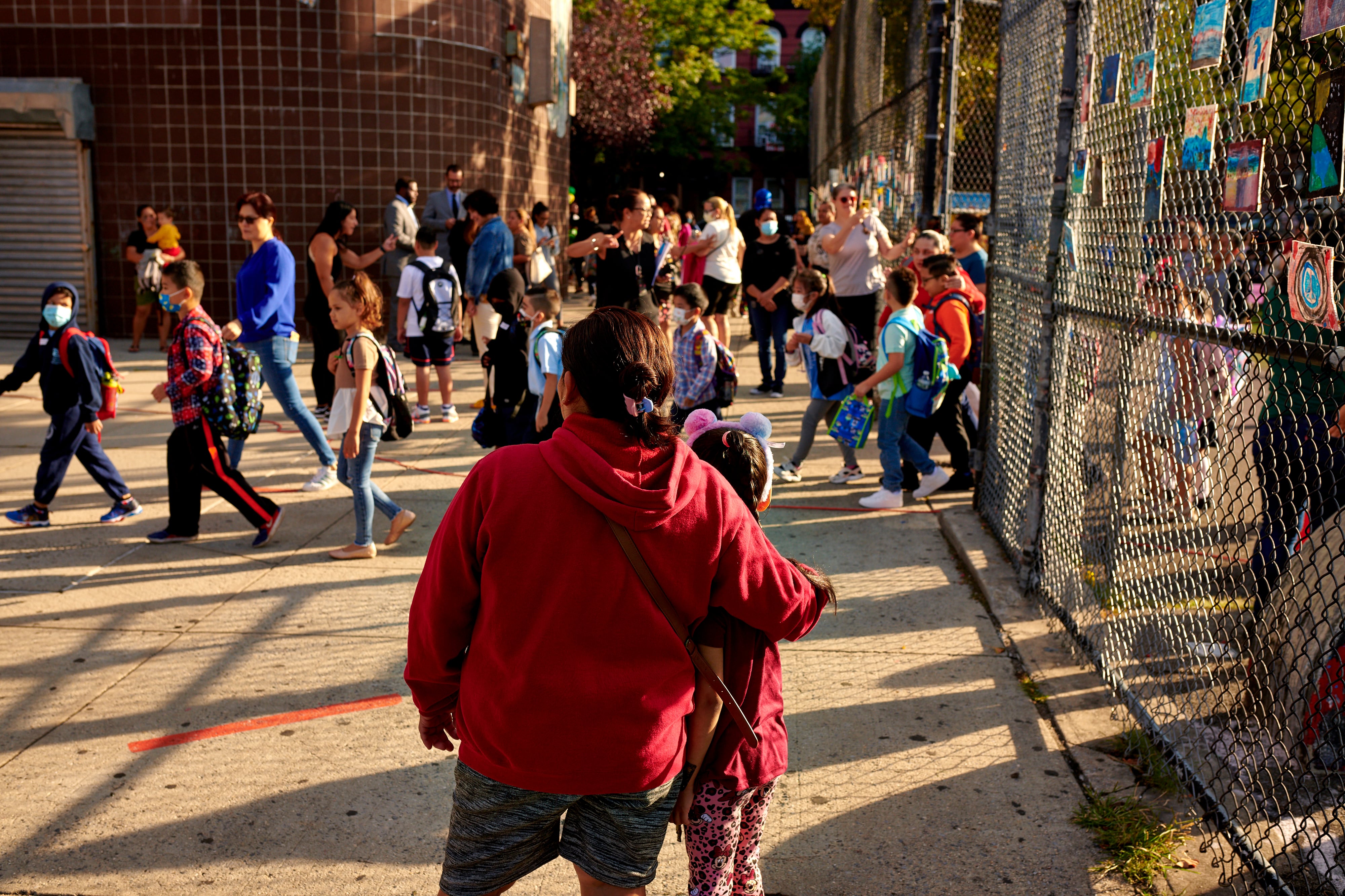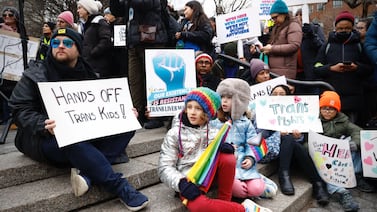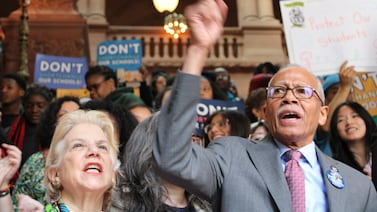As New York City’s public school enrollment continued to fall this year, the education department reversed course on a major budget policy, announcing Monday it won’t claw back money midyear from schools with fewer students than projected.
The announcement will likely come as a big relief to many principals who were staring down hundreds of thousands of dollars in midyear budget deficits. But without knowing the policy would change, some schools had already sent teachers packing weeks into the school year.
“It definitely relieves stress and just gives us more wiggle room to do the things students need,” said a Manhattan principal who spoke on the condition of anonymity.
Yet it was too late for one Bronx middle school that let go of four teachers earlier this year in preparation for the midyear cut.
“The damage is done,” said a teacher at the school, who requested anonymity for fear of retribution. “We lost our teachers, everything was thrown up in the air.”
Now, the city is saying it will use $200 million in federal stimulus money to hold schools harmless for enrolling fewer students than projected. Overall, K-12 enrollment fell by about 15,000, or 1.8% this year — a significant drop, but less than the 30,000-student decline officials had anticipated. Final enrollment numbers aren’t tallied until the spring and could change as students enter and exit the system in the coming months.
The smaller-than-expected drop may be due in large part to an influx of thousands of asylum-seeking students — many sent to New York on buses by Texas Gov. Greg Abbott — since this summer. An estimated 7,200 homeless students, many of them likely asylum-seekers, have enrolled in city public schools this year, officials said last week.
Enrollment has been falling in city public schools since long before the pandemic, but the drop accelerated since the arrival of COVID, with fewer new students entering and greater numbers fleeing the city.
Enrollment is a critical metric for both individual schools and the district as a whole because school funding is largely tied to student numbers, and when schools shrink too much, they have a hard time paying for a full range of academic and extracurricular services.
Just as schools with fewer students than projected typically have to give back money in the “midyear budget adjustment,” those that surpassed predictions get an injection of funds. But it can be tricky to spend the additional money effectively, since it’s often difficult to hire new staff midway through the school year.
“This investment will boost our schools that face continued enrollment challenges caused by the pandemic,” schools Chancellor David Banks said in a statement. Officials didn’t immediately say where the $200 million in stimulus money was coming from.
Banks previously argued that school budgets need to be brought in line with enrollment — and the city already cut the majority of school budgets to reflect that. Calling off the midyear cuts won’t restore budget reductions made last summer to reflect enrollment losses from earlier in the pandemic.
The continued enrollment declines mean that schools may still face another round of budget cuts next school year.
A continuing decline
The number of students in the city’s public schools has been falling steadily since well before the pandemic, a drop that officials have largely attributed to declining birth rates.
But the downward trend accelerated sharply during the pandemic, with the number of students enrolled in K-12 public schools dropping by more than 100,000 students since the 2019-20 school year— a drop far greater than the previous decade combined.
In the eight years before the pandemic, K-12 enrollment fell by a total of 66,000, according to education department figures.
Prekindergarten programs for the city’s 4-year-olds have also seen enrollment drops, but the city’s free 3-K programs for 3-year-olds are continuing to expand, making it harder to assess overall preschool enrollment shifts during the pandemic.
As of last year, the city had 201 schools with fewer than 200 students on their registers, up from 125 a decade ago, according to education department data.
The enrollment losses have been driven both by fewer new students entering the system and greater numbers leaving it.
In the 2020-21 school year, the number of new students entering city schools cratered, according to education department data. That number bounced back a bit last school year, but wasn’t enough to make up for a surge in students leaving the system in what officials called a “delayed effect of the pandemic.”
Nearly 104,000 were discharged from city public schools last school year, up from around 68,000 in the 2017-18 school year, according to education department numbers.
The surge in departures was primarily driven by more students leaving the city, according to the education department data, with nearly 58,000 students moving away from New York City last year, up from an average of around 33,000 the previous three school years.
Around 13,400 of those students moved to other parts of New York state, with Long Island receiving the largest numbers, according to the education department.
Outside of New York, New Jersey welcomed the largest number of students, followed by southern states (excluding Florida). After that came Florida and Pennsylvania.
Student exodus
Erika Kendall — president of the Brooklyn parent council that includes Crown Heights, Prospect Heights, and East Flatbush — said families in her community were affected by economic instability and the loss of caregivers from COVID. The number of students leaving District 17 schools for those outside the city more than doubled last year, city figures show.
“Our parents never stopped working away from home, were the ones most in danger of exposure, and the ones most in need of consideration when it came to public health policies,” she wrote in an email. “Many of them died, and the remaining family members had to strategize to create a new life for the kids” — often outside the city.
The number of students leaving city public schools for charters and private schools also increased moderately during the pandemic while the number of students opting for home-schooling nearly tripled, from around 1,800 in the 2019-20 school year to almost 5,300 last year.
The enrollment drops were steepest among Black students, whose numbers fell by 22% between the 2017-18 and 2021-22 school years. Asian American student enrollment saw the smallest decline, dropping 7.3% during that same period.
Black students who left the city were more likely to move to the South, while Asian American students moved in the greatest numbers to Long Island, the education department data shows.
The South Bronx, Upper Manhattan, and Central Brooklyn had the largest shares of its students leaving schools during the pandemic.
Carmen Feliciano pulled her 8-year-old daughter Laila from the public school system this year, leaving the South Bronx for Colorado Springs this summer.
When schools reopened full time last year, Feliciano decided to keep Laila home because her daughter was still reeling from the death of her father, and she also feared Laila would get infected with COVID. But Feliciano became frustrated with school officials, whom she claims threatened to call child services because Laila wasn’t showing up to class, even though Feliciano had drafted a letter of intent to home-school her daughter. She was waiting for official approval, she said.
“Why not give homework and stuff, why not make a visit to the house?” Feliciano said. “They should do more alternative things to help the parents.”
Feliciano also didn’t like that unvaccinated parents like herself couldn’t enter the building this year, preventing some parents from getting more involved.
Her daughter likes her new school in Colorado Springs, where Feliciano has an adult son. She praised the school for holding many events for families and students and for offering Laila extra help in math, as well as counseling services.
“I like it because my daughter, she’s happy,” Feliciano said.
Reema Amin and Alex Zimmerman contributed.
Michael Elsen-Rooney is a reporter for Chalkbeat New York, covering NYC public schools. Contact Michael at melsen-rooney@chalkbeat.org.







